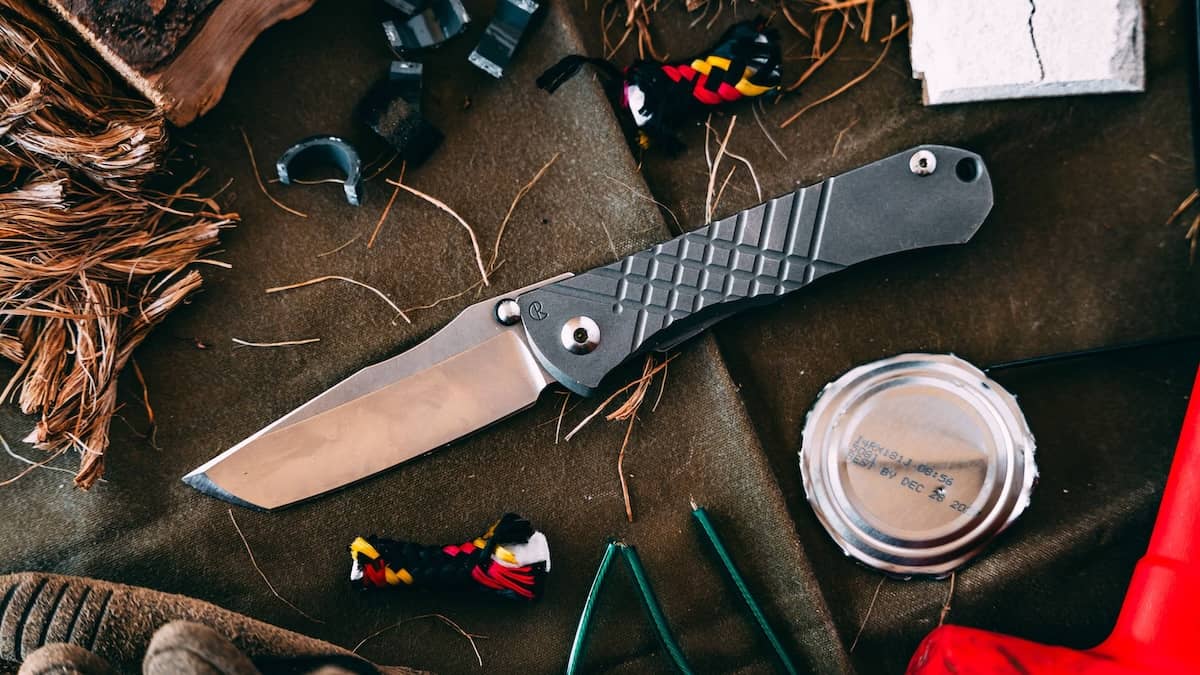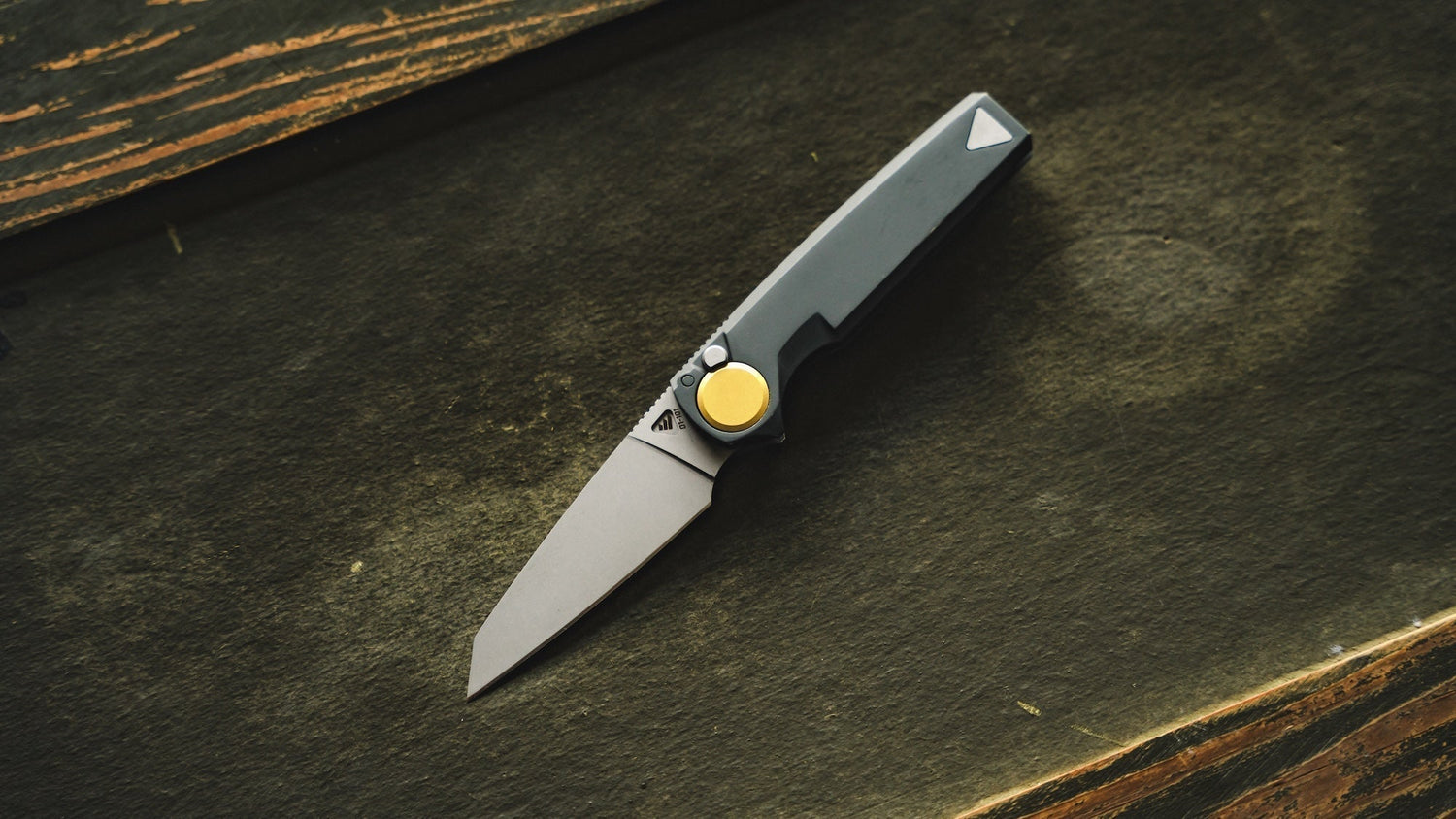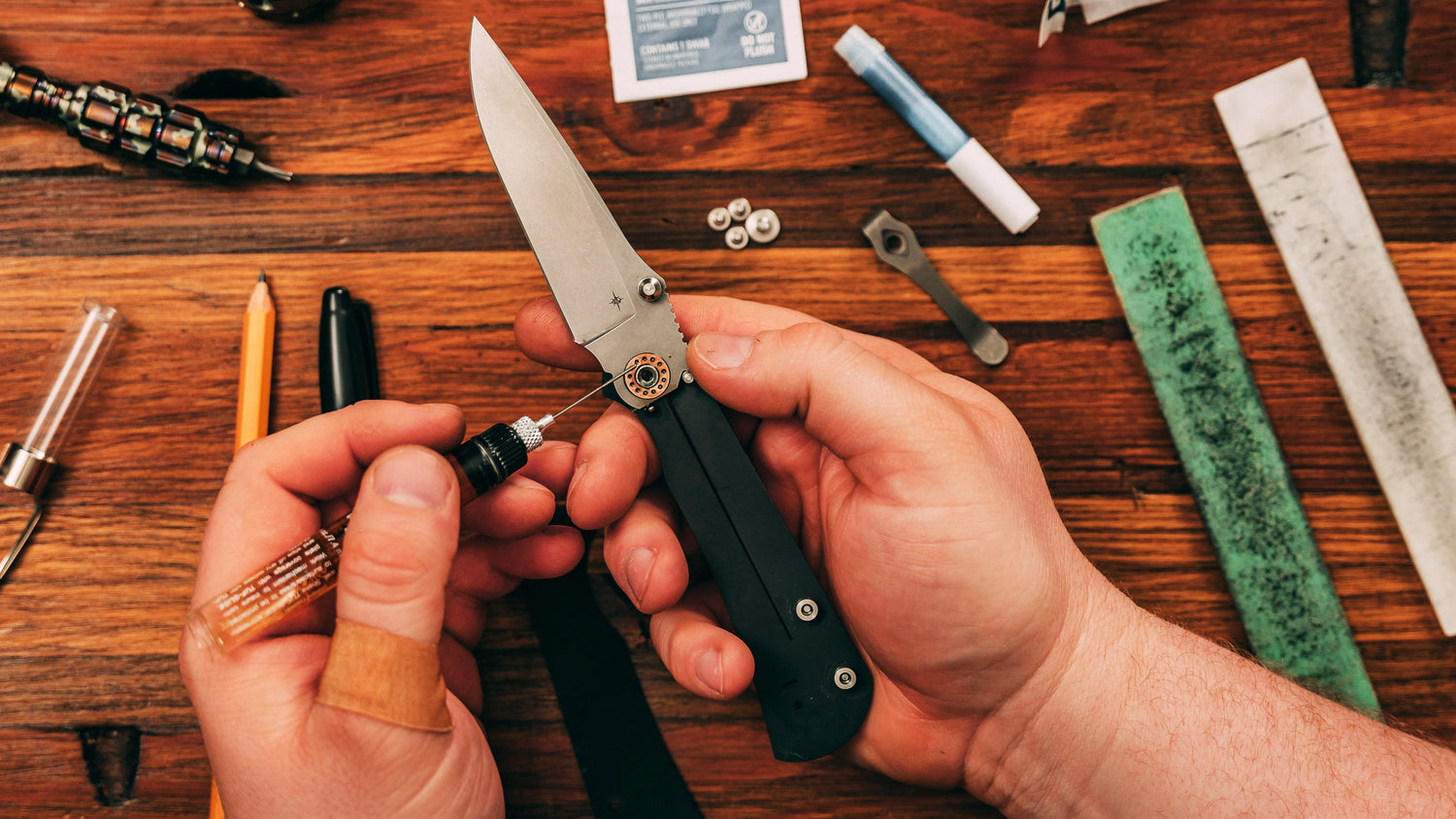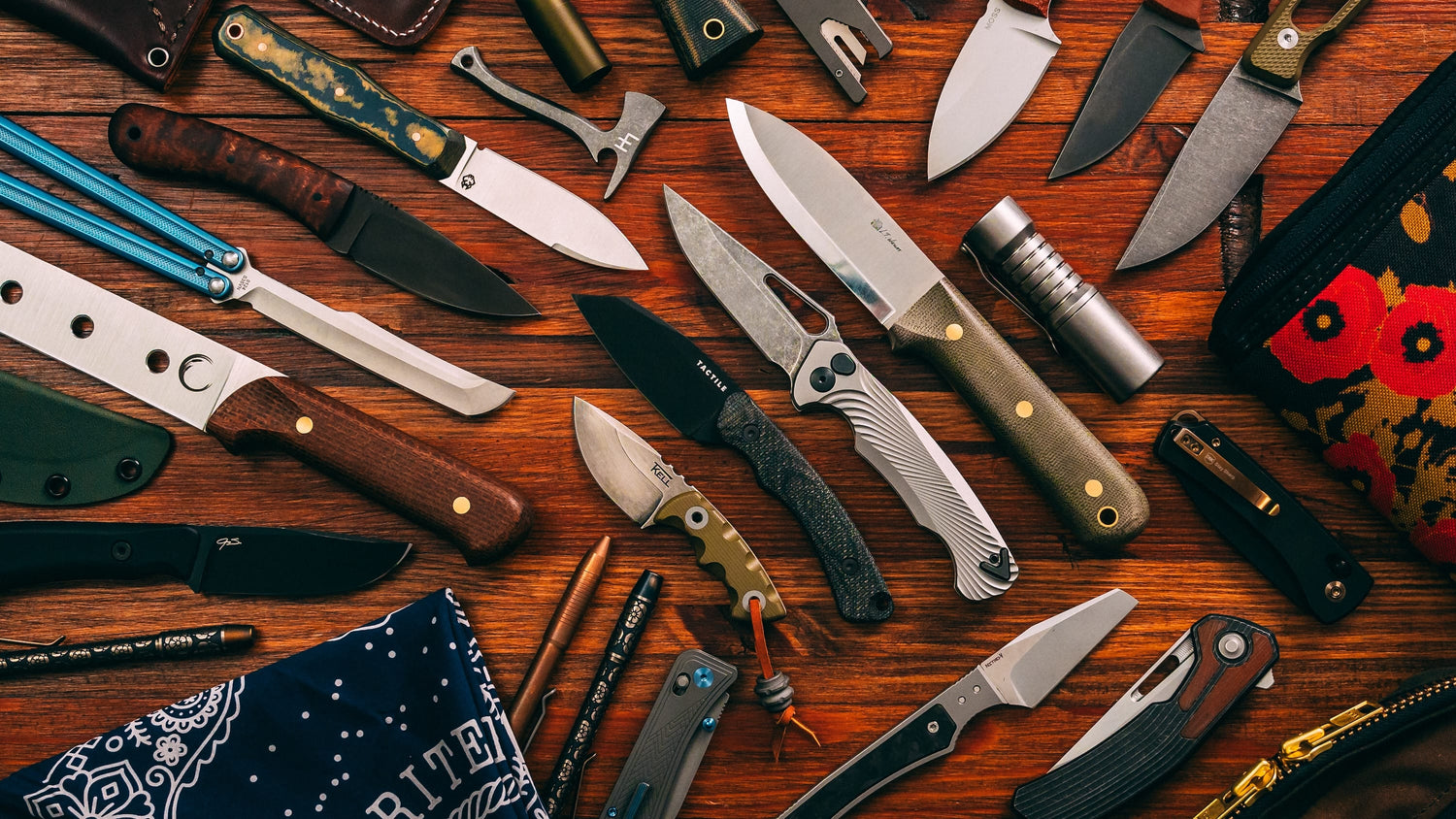The Chris Reeve Umnumzaan is touted as "fixed blade strength…in your pocket." But does it live up to its widespread tough reputation? And at $500 and a six-year waitlist straight from Chris Reeve, is it worth it?
Having carried this blade extensively over the years, I decided to put the Zaan through the gauntlet and see how it fares.
Why the Umnumzaan?
If you've ever handled a Chris Reeve knife, you're well aware of the exception fit and finish. While they're not necessarily for everyone, they have a certain je ne sais quoi that tends to make other knives feel different or less impressive.
They usually feature a minimal, understated design. They feel solid and hydraulic with phosphor bronze washers and a distinct clank when the lock bar snaps into place, rather than the quick and snappy flippers on bearings. I'd liken it to an old muscle car that thuds when you close the door. It's just built different.
The quality that always jumps out to me when handling a Chris Reeve knife is how tough they feel. Of all the Chris Reeve knives I've handled and owned, there is one in a class of its own when it comes to that tough feel: the Umnumzaan. But is it really as tough as it feels?
For years now, I've maintained that if I were to have only one folder, it would absolutely be the Umnumzaan. Given that and its reputation as being a brute, I figured we had to put it to the test.
What Makes the Umnumzaan Tough?
We asked Tim Reeve of Chris Reeve Knives how he thought the Umnumzaan would fare and he said he thinks it's definitely the toughest folder in their lineup for a number of reasons, such as the overall construction of the pivot, the thumb studs serving as a stop pin, and the thickness of the blade.
- Blade Thickness: At 140 thousandths of an inch thick, it surpasses the Sebenza’s blade by 19 thousandths, adding some heft.
- Stop Pin & Pivot Design: The innovative thumb stud functions as a stop pin, backed by a strong frame lock and oversized two-piece pivot.
- Hollow Grind: While the Umnumzaan and Inkosi have the same blade thickness, the Inkosi has a shallower hollow grind which could make it resist bending better. That said, the Umnumzaan’s additional heft above the thumb studs and pivot construction could make it the more rugged design overall—at least theoretically.
Everyday Cutting Tests
Despite buying the tanto version we tested used from my Discord server, the knife arrived razor-sharp—a 147 on the sharpness tester. Like the Ozark Trail vs Bugout video, the Umnumzaan was faced with ropes, cardboard, clothes line cable, and zip ties.
Even after drywall, rubber hoses, and even opening a can of corn, the blade showed signs of minimal wear. And thanks to the robust tip of the tanto blade, prying staples was easy, although the thicker tip was a bit tougher to get under the staples.
There was some minor rolling in a few places along the edge, just as we'd seen with the Bugout and Ozark Trail knife. But the Umnumzaan maintained its sharpness even better than expected, an impressive 192 on the sharpness tester.
Accidental Drops and Abuse
Accidents happen, and there have been plenty of times a knife clip has caught something and the knife has fallen out of my pocket. As such, we tested dropping the knife--both open and closed--on to asphalt and concrete from approximate waist height.
After countless drops, there was very minor scratching on the handles--so minor we had to look pretty closely to even find them at the very end of the testing. The tip of the blade, on the other hand, suffered some significant damage. The tip became completely blunted with very noticeable rolling. The previous knives fared better in these drop tests because the heft of the Umnumzaan made it hit the asphalt with more force.
Running over the knife with a truck, however, proved to be no problem whatsoever. Only on the second time running it over, with the clip facing the asphalt, was the clip bent. It was still perfectly functional, but noticeably bent in with much greater retention in the pocket.
Up to this point, the knife is still perfectly functional with no major damage. With mostly just minor cosmetic blemishes, the action and lockup were not impacted in any way. The only real notable damage was to the edge of the blade, which could be fixed with sharpening or a minor reprofile.
Testing Fixed Blade Strength
With plans of testing the Chris Reeve warranty and service process, we didn't want to outright destroy this Unmnumzaan. (Not yet anyway.) That said, claims of “fixed blade strength” required more—enter batoning.
Batoning is a pretty polarizing test. For starters, you shouldn't baton with a folder anyway. It's a fixed blade task. But we wanted to push the Umnumzaan a little bit, so we batoned it through a few pieces of dry birch. The first piece, we left the lock disengaged, which is how you should baton if you baton with a folder. (In case I haven't made it very clear so far, you still should not baton with a folder.) The second and third pieces were batoned with the lock engaged.
This led to the worst damage the Umnumzaan would suffer throughout our testing. The lock bar on the Umnumzaan has a ceramic ball set in it. This ceramic ball acts as both the detent to keep the blade closed and the lock interface. Since the ceramic is harder than the steel used in the blade, batoning created two noticeable circular grooves on the lock interface. This introduced a very minor amount of blade play but also notable lock stick.
The Verdict—Winner or Loser?
Compared to all of the previous tests we've done so far, the Umnumzaan fared far better, which is no real surprise. It's the only full-metal construction we've tested thus far. The additional heft did lead to more damage from dropping the knife, but it handled every test better than the previous knives.
Even after all the abuse, the knife was still very functional. The lockup was still mostly solid, but the lockup location moved from about 65% in the beginning to roughly 90% at the end. The knife would still be safe to use and could still function just fine with a little time on a sharpener.
At the same time, we still have to address the price point. At $500, is this knife worth several times more than the other knives we've tested? If you're after pure value, no. You could own dozens of knives that will handle these tests similarly for the price of one Umnumzaan.
However, the allure of Chris Reeve Knives is about more than just value. It's about precision craftsmanship. It's about American manufacturing. It's about supporting a company that rarely ships a product that is shy of perfect. It's about buying a single knife that can be handed down through generations if it's treated well and maintained.
At the end of the day, my position on the Umnumzaan remains the same. It's still my one-and-done. Nothing I saw in my testing was surprising or anything that would give me pause about buying or owning another Chris Reeve knife or an Umnumzaan.
What's Next?
After testing, this Umnumzaan is heading back to Chris Reeve for repair. We're going to send it in under a warranty claim under a pseudonym to try and get a fair assessment and (hopefully) no special treatment.
While I have my doubts about what will be covered by the Chris Reeve warranty for our poor Tanto Zaan, the company does offer services for refreshing the finish, repairing used knives, or even blade replacements.
In the meantime, we'll continue testing other knives. Let us know what knife models or head-to-heads you'd like to see in the future.





